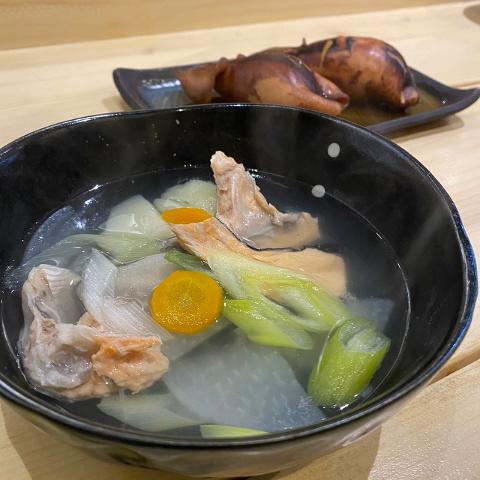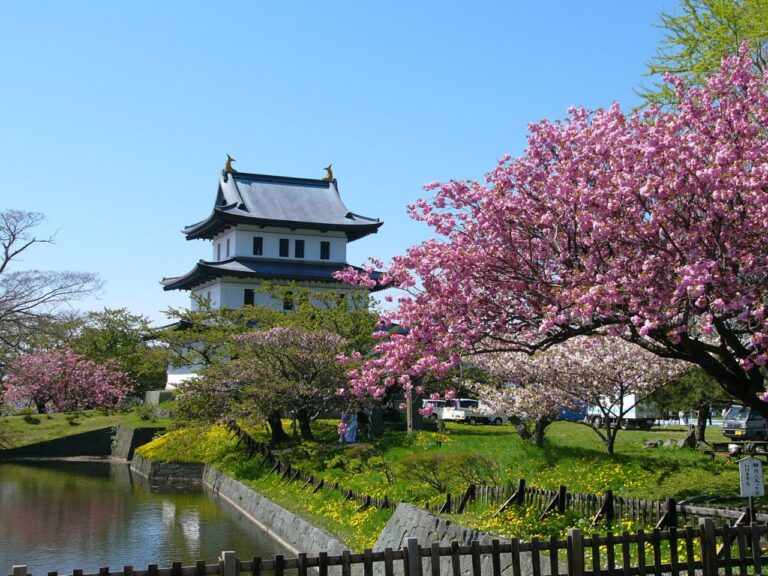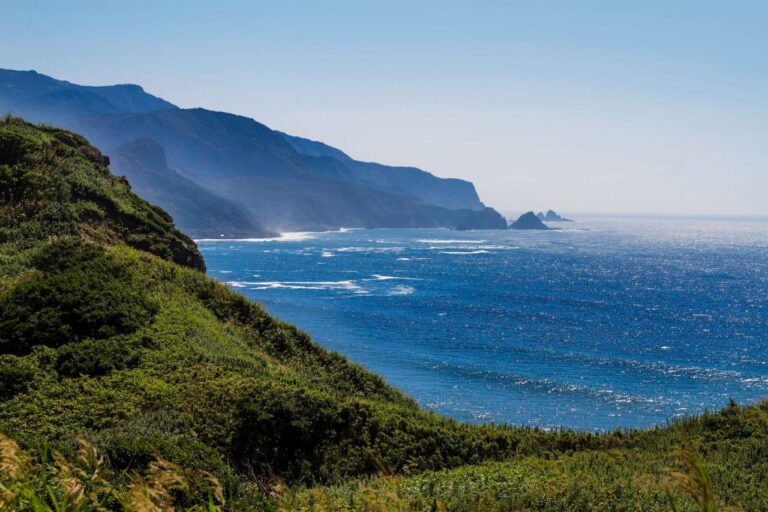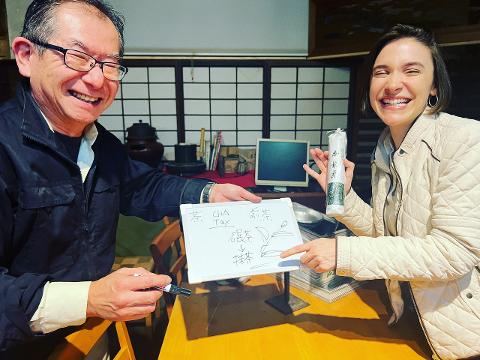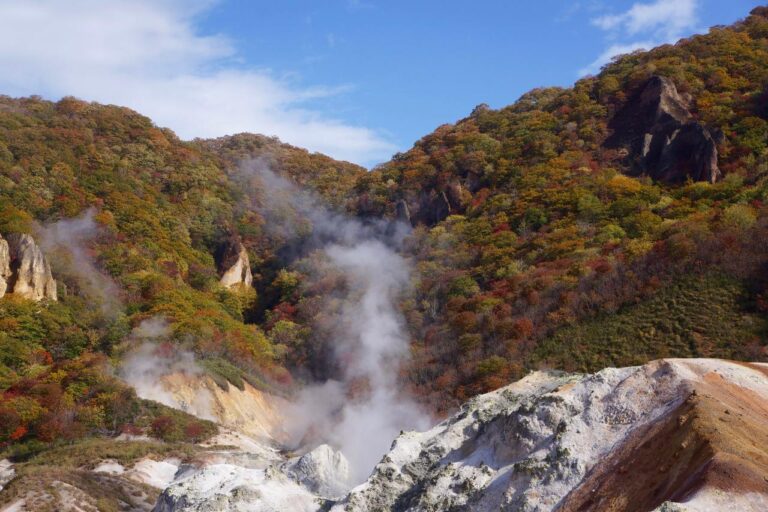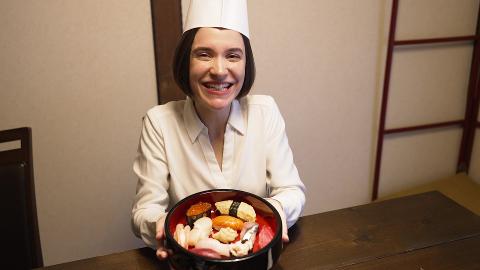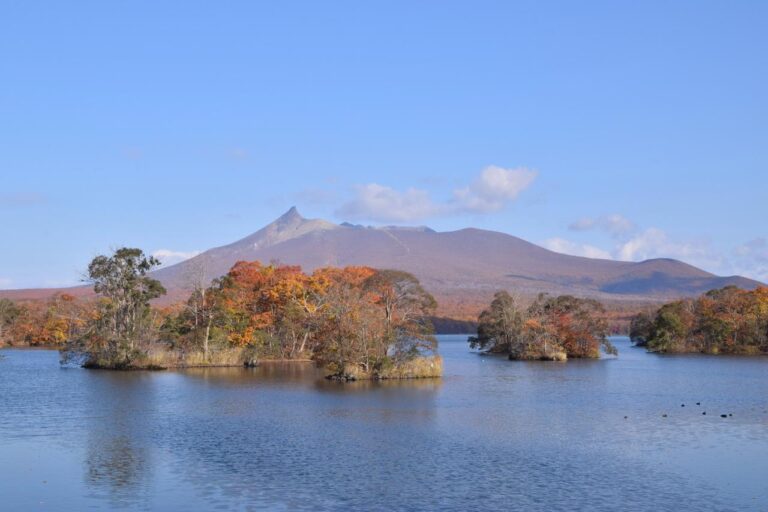Tour Duration: 7 days
Price : 740,000yen/person
Departure Location: Kushiro Airport
The extreme eastern part of Hokkaido is frequently referred to as Japan's final uncharted territory. The region is a great spot to connect with nature and take in the Hokkaido-specific flora and wildlife. On this tour, we visit three national parks in eastern Hokkaido: Kushiro Shitsugen Wetland, Lakes Akan and Mashu, and Shiretoko Peninsula, which is also a UNESCO-designated Natural World Heritage Area. Along the way, we'll also show you some of the region's hidden gems, such as the Ainu native culture, the food that local fishermen love, and the people who dedicate their lives to protecting the wetlands and the wildlife that calls it home.
Day 1 Deep exploration into Japan's Far East region
We'll meet at Kushiro City between 1:00 and 2:00. After everyone arrives in Kushiro, we'll take some time to get to know one another and go over the itinerary for our forthcoming excursion before heading out for a quick stroll along the Kushiro Wetland path. With an area of 22,070 ha (54,500 acres), larger than the size of our capital Tokyo, Kushiro Shitsugen Wetland is the largest remaining wetland in Japan today and is registered as a Ramsar site (a wetland of international importance).
We'll take in the views of the enormous wetland before making the short van ride to Lake Kussharo, which is a part of Lake Akan-Mashu National Park. The Ainu, a Hokkaido native group, will conduct a concert here before our first evening meal. The fish from the lake and other things the Ainu frequently utilized in their regular diet will be served for dinner. Our overnight lodgings are supplied with a serene view of Lake Kussharo and are situated right on its coast.

Day 2 Wildlife cruise on local fishing boat with a chance to sight Ezo brown bear
Today we will canoe all day, first on Lake Kussharo (3km/1.9miles, 2 hours), then on the Kushiro River (5km/3.1miles, 3 hours). At the base of Wakoto Hanto, a short peninsula that was once an island dangling in the lake, we shall begin. With steam vents and hot springs erupting from the ground on the shore, it is simple to imagine that the Wakoto Peninsula was formed by volcanic activity as we paddle about it in our canoes. When we arrive close to "Oyakotsu Jigoku," our lunch will be ready for us, and we may enjoy locally grown vegetables and eggs cooked in geothermal steam!
We will travel to the beginning of the Kushiro River, the water source that supplies Kushiro Shitsugen Wetland, after enjoying lunch and a foot treatment in the nearby natural hot springs. Upstream on the clear water, we will have a leisurely canoe ride until we reach the Biruwa Bridge, where we will say goodbye to the boats and transfer by van for 40 minutes to Yoroushi Onsen. Bird enthusiasts will flock to our nighttime lodging since Blakiston's fish owls irrationally show up to eat along the river that runs by our lodging. We have a traditional Japanese course meal prepared with sea and mountain bounty while staying at our accommodations. Yoroushi is a serene hot spring village tucked away in the forest where you may relax while taking an outdoor onsen bath while listening to the river.

Day 3 Canoeing to observe upclose the volcanic hot spots and unique wetland ecosystem
This morning, we take an hour-long van ride to the Notsuke Peninsula, where we participate in a guided nature walk to see the local animals in its distinctive habitat on the 28 km (or 17 mi) long sand spit. The peninsula receives about 66,000 water birds during the migration season; in 2005, this significance was recognized as a Ramsar Site. We will take a leisurely 1.5 hours of walking before heading to Shibetsu Ichani for a wonderful meal.
The bond between the locals and salmon dates back thousands of years, and the salmon continues to be the foundation of the Shibetsu people's way of life. In a former salmon fisherman's home, we will eat "ochazuke," which is rice with salmon in broth. We take a 45-minute van ride north after lunch to reach Rausu, where we will spend the next two nights. We pause briefly at the river en route to search for salmon moving upstream. Known for its kelp and sea urchins, Rausu is a flourishing fishing community that also acts as the eastern entrance to Shiretoko National Park.

Day 4 Meet and dine with local fishermen, nature guides and conservation activists
Salmon and the locals have a long-standing relationship, and the salmon still forms the cornerstone of the Shibetsu people's way of life. We will enjoy "ochazuke," which is rice with salmon in broth, in the residence of a former salmon fisherman. After lunch, we take a 45-minute bus trip to Rausu, where we will spend the following two nights. On the way, we stop momentarily by the river to look for fish migrating upstream. Rausu, a thriving fishing hamlet and the eastern gateway to Shiretoko National Park, is well-known for its kelp and sea urchins.
We'll have lunch at the boat captain's guesthouse, which used to be a kelp workers' farm, once we get back from the boat excursion. Following lunch and conversation with our hosts, we will board the van and drive via the Shiretoko Pass to Utoro, which is located on the western side of the peninsula. Ezo brown bears have a large population density in Shiretoko.
We will have a brief lesson prior to entering the bear habitat at Shiretoko Five Lakes, where we will trek in the afternoon. Unless the walkway is closed due to the presence of a bear on the trail, our goal is to complete the entire walkway to visit all of the Five Lakes. We'll all have dinner together tonight in a bar restaurant in Rausu town.
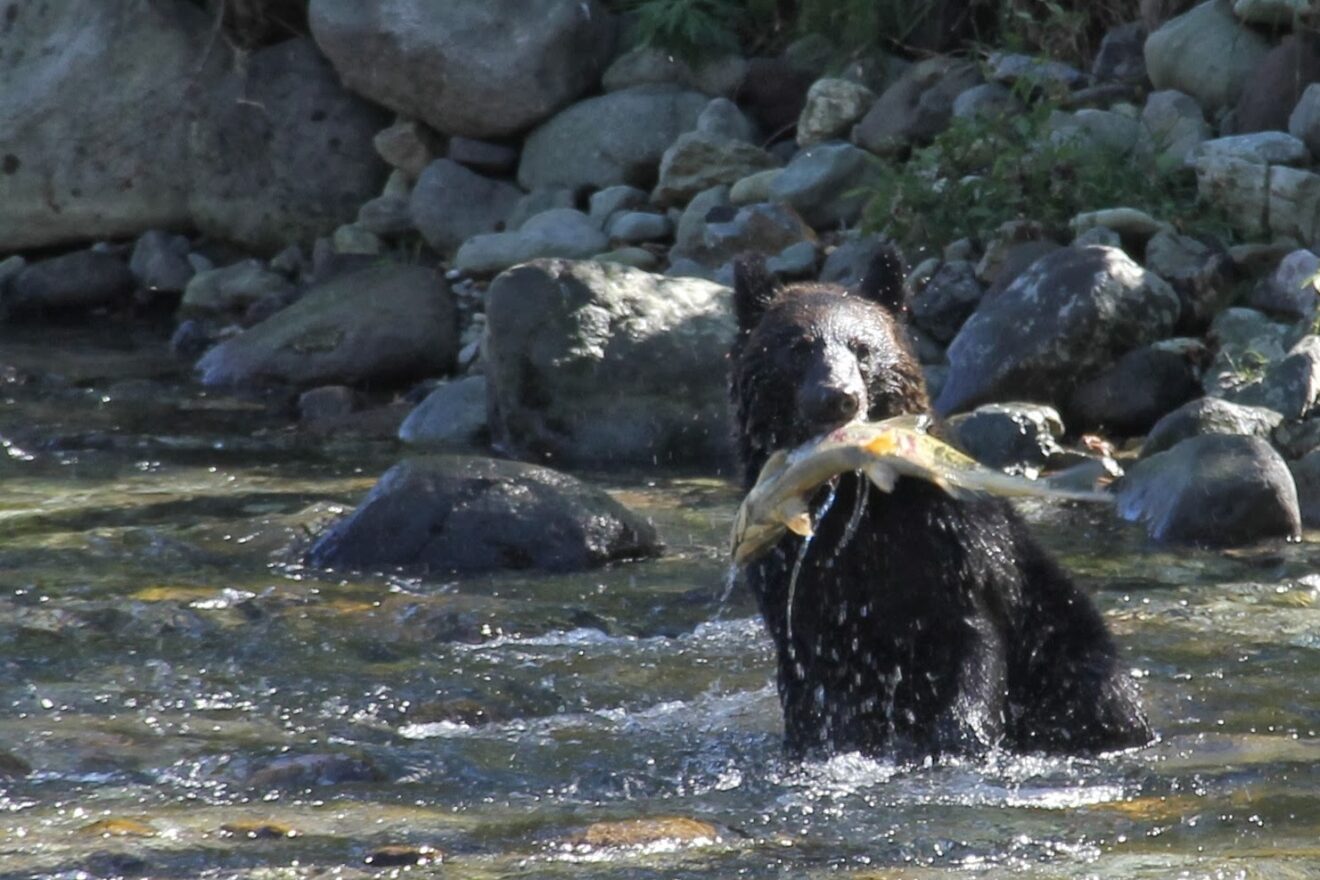
Day 5 Meet and dine with local fishermen, nature guides and conservation activists
We have a leisurely morning today as we drive 2.5 hours south in the van to Hamanaka Town, a thriving dairy and fishing community on Hokkaido's southern coast. We quickly stop at the picturesque Cape Kiritappu and its lighthouse before we gather with the local fishermen's families for a practical meal. We will practice producing "dashi," a kelp stock used to prepare miso soup, as well as sea urchin preparation. Together with the local families, we will eat a seafood meal to refuel before our 1.5-hour (about 4 km/2.5 mile) canoe trip on the Kiritappu Wetland in the late afternoon.
Even while Kiritappu's wetland is not as large as Kushiro Wetland, it offers a charming setting for canoeing in little river channels that allows us to float silently and experience a sense of intimacy to the wetland ecosystem. Our local canoe guide will prepare dinner, and depending on the number of people, the group may be split into two different lodgings (they are only 300m/990ft away).
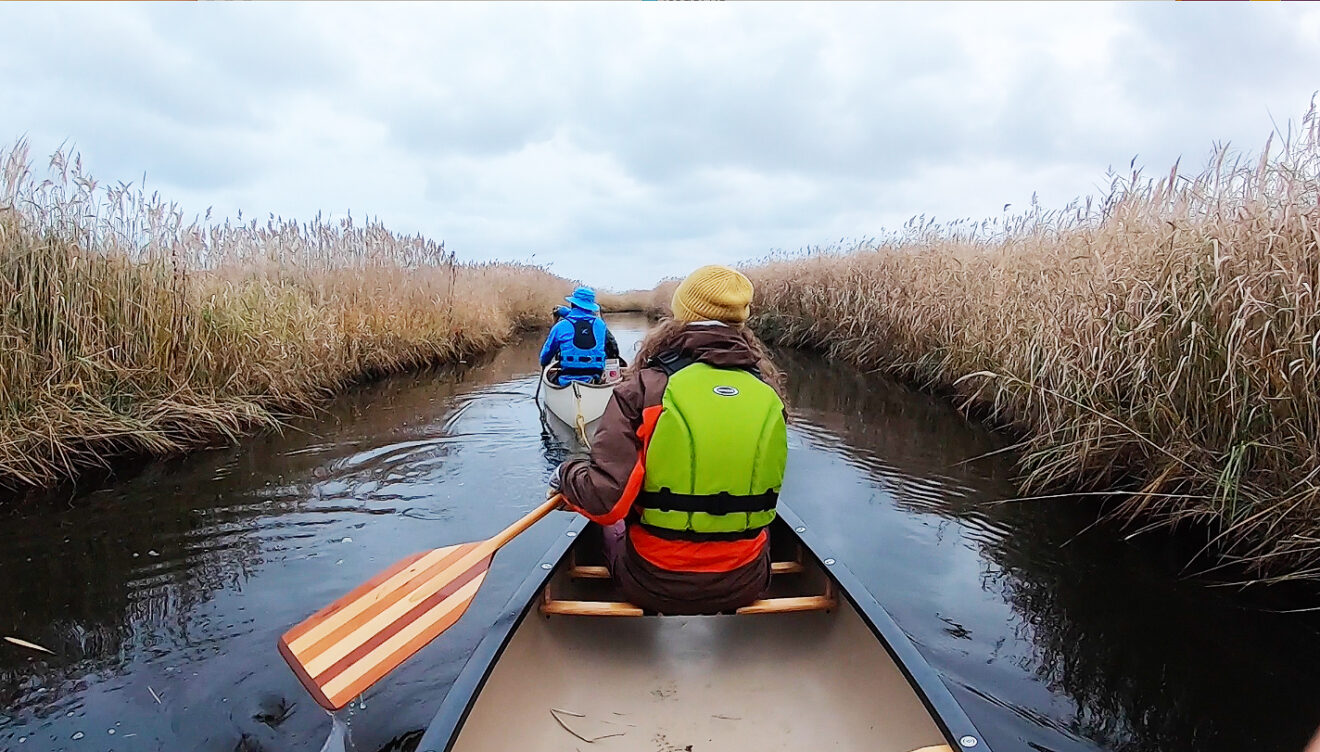
Day 6 Day tour of your choosing
Your main activity for the day might either be a tour to the deserted island of Kenbokki or a guided bird watching tour. Both trips run in small, private groups of up to 6 or 9 people, are led by local experts, and begin at 9:30 am and end at 12:30 pm, respectively. We will split the party into two after breakfast at our lodging, and each group will go on its own tour.
The bird watching tour will take you to several bird habitats, including wetlands, the seashore, and forests, so you can see the variety of bird life that can be found in Kiritappu. It goes without saying that people who wish to see more birds would love this excursion. There used to be a farm and a small population on Kenbokki Island, which is reachable by boat in ten minutes, but the island has been deserted for at least fifty years. For those who enjoy walking in untamed wilderness, this excursion is ideal.
We get together again for a group lunch at a nearby farm restaurant to sample the local fare and the dairy products that this area is renowned for. We will return to our accommodations in the late afternoon, where we will learn about the conservation initiatives undertaken by the Kiritappu Shitsugen National Trust and Mr. Katsuya Urita, the property owner. We enjoy a delicious dinner made by our host utilizing local ingredients on the final night as we celebrate.

Day 7 Trip to Akkesshi and Goodbyes
We'll take it easy this morning before departing from our lodging at around 10 a.m. We bid our hosts farewell and then go for about 40 minutes to the nearby town of Akkeshi, known as the oyster capital of the world. In the distant past, oysters grew naturally along Akkeshi Bay due to the coastal wetlands' ability to hold onto the water's abundant nutrients. Today's advancements in oyster farming allow us to enjoy this seasonal delicacy all year long.
We try oyster shucking for our lunch and eat oyster dishes. Then, we'll take the van to Kushiro and, in the early afternoon, board a train to Sapporo. Just after six o'clock, the train will arrive in Sapporo, and we will say our goodbyes there.


